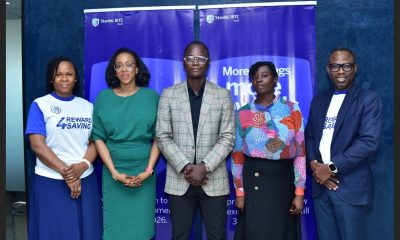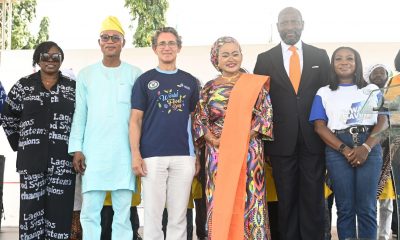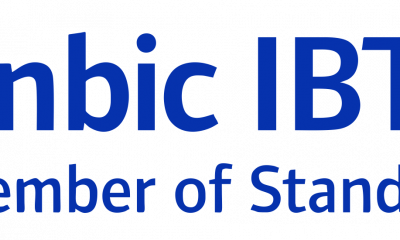Banking
CSI Key to Our Business Sustainability—Stanbic IBTC Boss

By Modupe Gbadeyanka
In order to help impact their operational environment, businesses deploy the Corporate Social Investment (CSI) tool to achieve this.
In this interview, the Group Chief Executive of Stanbic IBTC Holdings Plc, Mr Yinka Sanni, examines CSI practice in Nigeria and how Stanbic IBTC deploys its CSI as part of the financial institution’s larger sustainability strategy for socioeconomic integration of the under-served in the society as well as a tool for creating shared values. (Excerpts)
How does Stanbic IBTC position corporate social investment (CSI)?
Most organisations interpret and implement CSI as best suits their overriding corporate goals. However, to borrow a leaf from the United Nations Industrial Development Organisation (UNIDO), we at Stanbic IBTC see CSI as a management concept whereby we integrate social and environmental concerns into our business operations and interactions with our stakeholders. CSI is the way through which Stanbic IBTC as a socially responsible company achieves a balance of economic, environmental and social imperatives.
At Stanbic IBTC, we are aligned to Standard Bank Group CSI focus which uses CSI to enhance our brand reputation, grow new markets, increase employee proposition and present us as socially responsible in a way that makes business sense. We share in the Group’s ideology where CSI is key and the watchwords are development, support and community upliftment.
Our CSI pillars in Stanbic IBTC are Education, Health and Economic Empowerment
In your opinion, are corporate organisations in Nigeria doing enough in terms of CSI or do you recommend a paradigm shift in attitude?
I believe that many organisations already see the value in CSI and are doing quite a bit of social investments. Nonetheless, when you examine the peculiarity of our operating environment, where there exist wide gaps between the different socio-economic classes, you’ll understand we could never do too much and that there’s always ample opportunity to do more, especially among the lower cadre of the socio-economic spectrum.
I mean those who sit at the bottom of the pyramid. I would advise that companies make a conscious and concerted effort not just to finance some add-on philanthropic things, but to change their strategies and business models and really develop and incorporate structured CSI approach into their management accounting and control systems. What is prevalent is that businesses have marvellous ambitions related to CSI. The question, however, remains how committed they are to actualizing or sustaining these ambitions and more importantly how they even plan to accomplish these ambitions.
Are your employees usually part of your stakeholder engagements?
Absolutely, at Stanbic IBTC our vision recognizes that our people are our most important asset, which makes it imperative to inspire and engage employees in ongoing CSI efforts to make a meaningful impact. We see our employees as our partners in all our sustainability initiatives. By doing this, not only do we succeed in getting their active involvement, but also benefit from the fact that employees gain a lot of valuable skills and experiences which make them a better asset to our organization.
The sustainability of an idea needs everyone in every title to be aligned to our mission of moving forward. We believe our people and culture will determine our success in executing our strategy, which includes our CSI.
Our business philosophy is anchored on and vested in building relationships and trust with our clients/customers, employees, shareholders, regulators, communities and other key stakeholders. Our values underpin our legitimacy and are intended to reinforce the trust our stakeholders have in our organisation. As such, we endeavour to carry along and get the buy in of all our internal and external stakeholders.
In fact, we have a culture of staff involvement and participation in our social investment initiatives which means that our staff are not only part of the activation but the entire process of identifying key areas where we choose to support, collaborate or invest. We try as much as possible to encourage our staff to either as teams or units voluntarily contribute and participate through departmental CSI activities which initiative has been hugely successful over the past year. Through staff CSI volunteerism or contribution alone, we have invested over a N100million towards various charitable causes under the health, education and economic empowerment portfolios year-to-date.
How important is corporate social investment to Stanbic IBTC’s business?
I believe it would be difficult to put a value to the importance of CSI to us as an organisation. Primarily because CSI is key to the sustainability of our business just as the support of all our stakeholders underpins our sustainability. This inter-dependence requires that we conduct our business responsibly to create value in the long-term interests of society. For us at Stanbic IBTC our mission is to continue to contribute to the socioeconomic development of the nation in a way that is consistent with the nature and size of our business operation. This is why we provide end-to-end financial services and products responsibly, bearing in mind the needs of society, our customers, our staff, our shareholders, the environment and future generations.
We do pride ourselves as a socially responsible corporate citizen of our country because CSI is an integral part of our DNA at Stanbic IBTC and Standard Bank Group. Standard Bank has over the years built reputation for continental support of arts and culture as well as sports development.
Our commitment to investing in corporate social projects and initiatives is something we take just as seriously as adhering to the highest corporate governance principles and operating in line with global best practice. At Stanbic IBTC, CSI isn’t a publicity platform. We see CSI as a duty. Like I mentioned earlier, our CSI falls under three prongs of health, education, and economic empowerment.
How do you select the initiatives and projects you undertake for your CSI and what model or models do you use for implementation?
Generally, our CSI initiatives must fall under any of the three pillars of health, education and economic empowerment. The model we’ve used and that has worked for us overtime is investing in projects we believe have the greatest impact, widest reach, and highest sustainability ratio and ensuring implementation with reputable, competent and reliable partners. We, however, have carried out several other projects like vaccination against hypophosphatasia (HPP), education materials donation, public school facility renovations, safety equipment donations, like safety helmets, water projects, as well as staff volunteerism initiatives I talked about earlier which we undertake directly. Just to mention that we recently donated relief materials worth millions of naira to alleviate the living conditions of our brothers and sister in Benue State and its environs who were devastated and displaced as a result of the flooding in that region.
Tell us about the project you refer to as your flagship CSI initiative “Together For A Limb” and why you organise the annual walk?
Thank you very much for that question. Having over a long period of time channelled our CSI on projects under both education and economic empowerment pillars of our CSI aegis, we decided it was time to revisit our intervention and shift focus back to the health sector, which explains why we decided on sponsoring and fitting children with limb loss with prosthesis. Which is why in the last two to three years Stanbic IBTC has consistently sponsored the donation of prostheses to some children living with limb difference, otherwise referred to as amputees.
We understand how challenging it must be for the parents and guardians of these children, especially considering the high cost of acquiring these prostheses and of course the value it would bring to the daily lives of these children. In addition to fitting the children with prostheses, Stanbic IBTC is also giving out Education Trust to the beneficiary children courtesy of our Trusteeship subsidiary.
We did not stop at that. To help raise public awareness for amputees, victims of terror attacks and other children who have limb differences or have lost limbs due to trauma, mismanaged injuries, accidents and, occasionally due to congenital issues, and create shared values in the community, Stanbic IBTC on Saturday, 14 November 2015, organised a Walk tagged ‘Out For A Limb’ in Lagos, chaired by the First Lady of Lagos State, Mrs. Bolanle Ambode. This was the very first edition and the walk featured management and staff, esteemed customers and friends of Stanbic IBTC and other well-meaning Nigerians. Our sincere gratitude go out to all our stakeholders who came out en-masse to join us in walking for a good cause. We are also forever grateful to Her Excellency, wife of the Executive Governor of Lagos State, Mrs Ambode, for her motherly love, support and guidance in identifying with our quest to raise awareness for amputees and help bring succour to underserved children who live with limb differences from the very start of the project.
Owing to just how committed Stanbic IBTC is to CSI, and most of all, this particular initiative which coincidentally is our adopted signature CSI project. The second edition, which held on Saturday, 24 September 2016 in Abuja, and which had now been rechristened ‘Together 4 A Limb’ which was more impactful.
Essentially because we decided to expand the scope of beneficiaries to include underserved children victims of the Boko Haram insurgency which has plagued the northern region of the country as some of the primary beneficiaries of the programme.
A 3-kilometre charity walk aimed at raising awareness and awakening public consciousness of children without limbs was flagged off by the Guest of Honour the First Lady of Nigeria, Mrs. Aisha Buhari, who was ably represented by the wife of the Zamfara State Governor, Hajiya Asmau Yari.
As is our practice and as part of the package, education trust fund worth millions of naira was awarded to each of the eight beneficiary children whom we had successfully fitted with artificial limbs. Six of the eight children beneficiaries were actually present at the charity walk and were presented cheques by Hajiya Yari while two others were presented at a separate ceremony. Five children had benefitted from the initiative in 2015 and received education trust fund and prostheses, which brought to 13 the number of children beneficiaries so far. In growing these numbers this year, preparations are in top gear to host the third edition of the initiative. We are currently, fitting and carrying out rehabilitation, as we are already preparing another set of six children who will join the growing list of beneficiaries of the initiative. These six children will be officially unveiled during the walk and presented with cheques in the form of education trust fund to guarantee their educational growth and development.
Banking
Yuletide: Ecobank Urges Vigilance Against Fraudsters, Assures Seamless Services
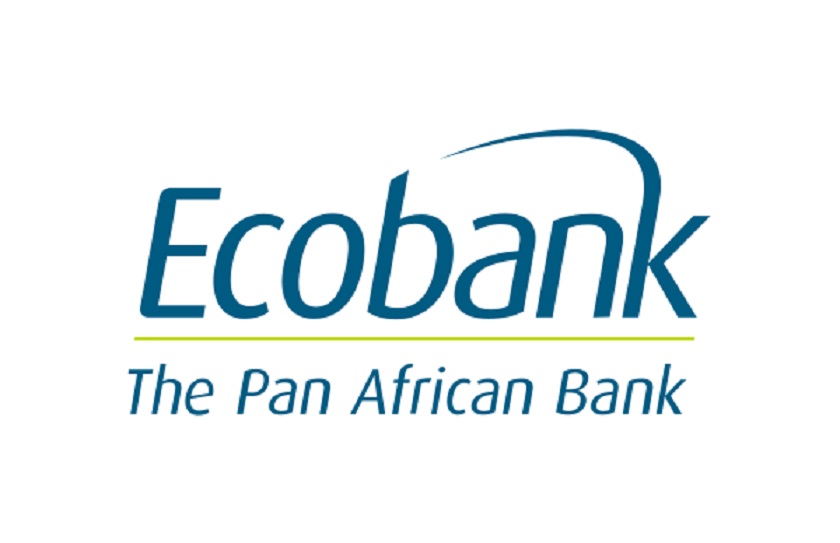
By Aduragbemi Omiyale
Customers of Ecobank Nigeria, a member of Africa’s leading pan-African banking group, have been assured of uninterrupted access to banking services throughout the year-end holiday period.
They can continue to carry out their financial transactions via the lender’s secure and robust digital platforms.
Ecobank also urged customers to remain vigilant against fraud and scams during the festive season, as fraudsters are looking to pounce on any gap.
“Before you wrap up the year, tighten your security. December brings online sales, travel, and year-end distractions—this is exactly when scammers are most active.
“From fake festive deals to cloned merchant sites and suspicious messages, staying vigilant helps keep your money safe,” the Head of Products & Analytics, Consumer & Commercial Banking at Ecobank Nigeria, Mr Victor Yalokwu, said in a statement.
He advised customers to shop only on trusted websites, never share their PINs, passwords, or one-time passwords (OTPs), avoid banking on public Wi-Fi networks, be cautious of urgent or emotionally charged messages, and regularly review their account activity.
He also disclosed that the bank’s digital channels — including Ecobank Cards, the Ecobank Mobile App, USSD *326#, Ecobank Online, OmniPlus, Omnilite, EcobankPay, RapidTransfer, ATMs, PoS terminals, and over 35,000 Ecobank Xpress Point (agency banking) locations nationwide — will remain fully available to support customers throughout the yuletide and year-end holiday period.
He noted that customers will continue to enjoy a wide range of services during the period, including local and international funds transfers, bill payments and airtime top-ups, merchant and QR payments, balance inquiries and account statements, as well as cardless cash withdrawals via ATMs.
According to Mr Yalokwu, “Ecobank encourages customers to leverage these digital solutions for safe, fast, and efficient banking, especially during the festive season when convenience and reliability are essential. While physical branch operations may be subject to adjusted working hours in line with public holidays, customers can be assured that Ecobank’s digital platforms are designed to deliver uninterrupted service and enhanced security at all times.
“Ecobank remains committed to providing innovative financial solutions and exceptional customer service, and we wish all our customers a joyful festive season and a prosperous New Year.”
Banking
5 Smart Moves to Wrap Up Your Year in Financial Style

By Margaret Banasko
“Detty December,” Nigeria’s unofficial end-of-year spectacle, is an annual economic boom of concerts and parties, amplified by the return of the “IJGB“ (I Just Got Back) crowd. This celebration drives massive discretionary spending and consumer euphoria.
However, this festive high often leads to a financial low; the “Long January.” This is when critical non-negotiable expenses like rent and school fees hit hard.
Do not treat December as a financial free-for-all. Savvy individuals and business leaders must reframe it as the final, crucial financial quarter. The goal is to shift from emotional spending to deliberate, strategic saving.
Here are five smart, actionable financial moves that are critical for maintaining fiscal discipline that will enable you to maximize the festive season’s enjoyment while effortlessly de-risking and prepping your finances for a strong Q1 trajectory.
- Capitalize on Discounted Bill Payments: The increased consumption of utilities, airtime, and data during this period necessitates higher essential recurring costs. Smart financial governance dictates actively seeking value on these high-frequency expenditures. Pay all essential bills from electricity tokens to data bundles and Cable TV subscriptions through a platform, such as the FairMoney app, that provides a direct financial incentive or cashback on purchases. This ensures that operational necessity does not unduly drain capital, as every percentage saved on recurring utilities is capital effectively preserved for critical Q1 requirements.
- Implement the 50/30/20 Rule Strategically: Acknowledge the inevitable social expenditure of Detty December by imposing a clear framework for resource allocation. This strategic rule dictates how your income must be distributed to ensure financial security. Divide your December income into three non-negotiable categories: Allocate 50 percent of your income directly to critical January financial requirements like rent, transportation, and structured debt payments; this sum must not be compromised. Allocate 30 percent to your discretionary December wants, covering social activities, gifts, and controlled splurges; once this budget threshold is met, spending must cease. Crucially, assign the remaining 20 percent to structured savings and investment.
This 20 percent is non-negotiable and serves as the anchor for long-term wealth creation and a buffer against the Long January strain. You can automate this crucial 20 percent deduction before you even begin spending using the FairSave feature on the FairMoney App, which enables instant autosave while you earn daily interest and retain the flexibility to withdraw anytime.
- Convert Festive Windfalls into Capital: Do not view every incoming festive cash gift or unexpected bonus as mere spending money. Instead, strategically treat any financial “windfall” as a direct deposit into your future wealth accumulation. The 100 Percent Rule applies here: commit to saving or investing 100 percent of any financial gift, as this capital was not part of your planned income, offering a critical opportunity to grow your savings effortlessly. Immediately isolate any unexpected cash injections and categorize them as investment capital rather than disposable income.
By leveraging FairLock on the FairMoney App, you can save 100 percent of the festive cash into a fixed deposit. This ensures the funds are secure and illiquid, accruing interest over the stipulated savings period, which can then be released on maturity to sort out major Q1 projects or investments.
- De-Risk Your December Savings Strategy: FairMoney’s premium, revolving credit line up to ₦5,000,000, FlexiCredit, serves as a crucial liquidity shield over your protected capital. Instead of being forced to prematurely break fixed deposits or liquidate interest-earning savings accounts to cover sudden, urgent expenses such as an unexpected repair or a short-notice business need, you can immediately draw the required funds from your FlexiCredit limit.
This allows critical, ring-fenced funds to remain untouched, continue accruing interest, and maintain their full readiness for the inevitable “Long January” obligations like rent and school fees. FlexiCredit empowers the savvy individual who earns a minimum of ₦250,000 as salary to strategically manage cash flow and capture short-term high-return opportunities without depleting their primary savings or operational capital, offering immediate bridge financing, charged at a competitive 0.25 percent per day only on the amount utilized.
- Prioritize High-Value, Low-Cost Experiential Activities: While Detty December’s allure often stems from high-ticket social events and luxury venues, truly impactful celebrations are measured by the quality of connection, not the cost of admission. Instead of defaulting to expensive restaurant dinners, exclusive concerts, or impulse travel, strategically redirect your social budget toward creative, high-value experiential activities.
Organize themed potlucks with friends, host a family Christmas hangout at home, or explore local attractions like parks and museums that offer rich experiences without the premium price tag. By substituting generic, high-cost outings with thoughtful, collective events, you significantly slash discretionary spending while often increasing the depth and enjoyment of the festive season, guaranteeing maximum emotional return on minimum financial investment.
By applying these five smart moves, you assert control over your finances, ensuring you do not just survive Detty December and the Long January, but wrap up the year not just in celebration, but in financial style, positioning yourself for an empowered and prosperous New Year.
Margaret Banasko is the Head of Marketing at FairMoney MFB
Banking
Stanbic IBTC Bank Assures Continued Strategic Investment in Artists, Designers
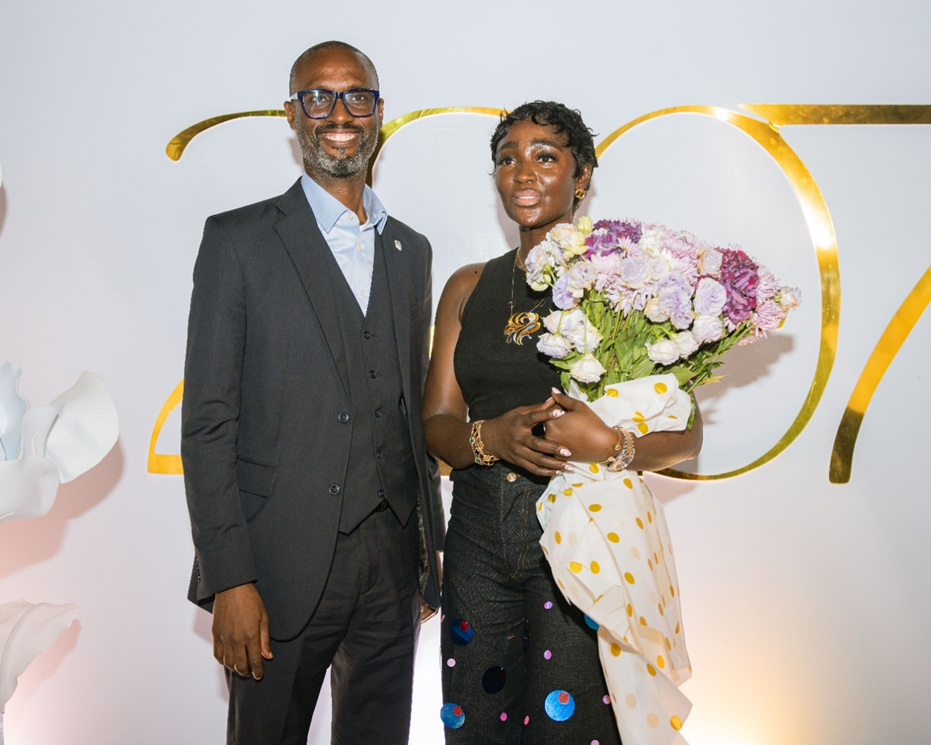
By Aduragbemi Omiyale
The creative industry in Nigeria may have nothing to worry about with the likes of Stanbic IBTC Bank around the corner.
The financial institution, which has not hidden its love for the sector, has promised to continue with its strategic investment in the country’s designers and artists.
Speaking at an event, An Evening of Fashion, Art & Lifestyle, the Executive Director for Personal and Private Banking at Stanbic IBTC Bank, Mr Olu Delano, represented by the Head of its Private Banking Segment, Ms Layo Ilori-Olaogun, said the company was proud to be associated with the programme, which it also sponsored.
“At Stanbic IBTC, we recognise Nigeria’s creative sector as a vital driver of economic diversification, employment, and global cultural influence.
“We are proud to support the individuals behind these platforms that elevate African excellence and provide visionary talents the visibility that they deserve.
“Nights like this reaffirm our commitment to continued strategic investment in our artists and designers,” he stated.
The invitation-only ceremony, which was held at The Garden, Federal Palace Hotel, Victoria Island, Lagos, hosted by Africa’s leading luxury fashion house, 2207bytbally, in collaboration with the acclaimed art collective Torrista, brought together high-net-worth individuals, art collectors, designers, media personalities, and luxury brand executives for an unparalleled showcase of creativity and sophistication.
The evening opened with a breathtaking runway presentation featuring three signature segments from the Evolve collection by 2207bytbally: Denim, Ethnic, and 2207 Prints. Each piece exemplified the meticulous craftsmanship, bold innovation, and cultural storytelling that has established the brand as a standard-bearer in African luxury fashion.
Complementing the couture was a curated exhibition by Torrista, transforming the venue into an immersive gallery. Commissioned artworks exploring themes of culture, femininity, and evolution created a robust visual dialogue with the collections, demonstrating the seamless harmony that can result when fashion and fine art converge.
“This evening was about more than clothes or canvases; it was about showing the world that African creativity is limitless. When fashion and art share the same space, magic happens, and tonight, Lagos felt that magic,” the Creative Director of 2207bytbally, Tolu Bally, stated.
-

 Feature/OPED6 years ago
Feature/OPED6 years agoDavos was Different this year
-
Travel/Tourism9 years ago
Lagos Seals Western Lodge Hotel In Ikorodu
-

 Showbiz3 years ago
Showbiz3 years agoEstranged Lover Releases Videos of Empress Njamah Bathing
-

 Banking8 years ago
Banking8 years agoSort Codes of GTBank Branches in Nigeria
-

 Economy3 years ago
Economy3 years agoSubsidy Removal: CNG at N130 Per Litre Cheaper Than Petrol—IPMAN
-

 Banking3 years ago
Banking3 years agoFirst Bank Announces Planned Downtime
-

 Banking3 years ago
Banking3 years agoSort Codes of UBA Branches in Nigeria
-

 Sports3 years ago
Sports3 years agoHighest Paid Nigerian Footballer – How Much Do Nigerian Footballers Earn



